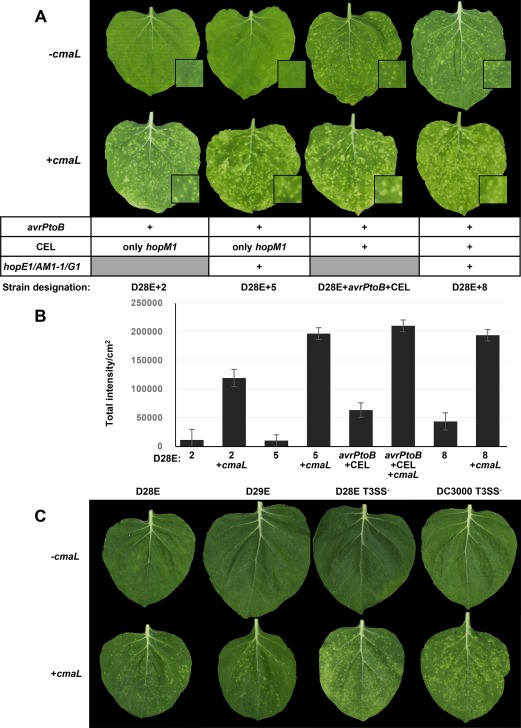Figure 1.

Pseudomonas syringae pv. tomato (Pto) DC3000 and D28E derivatives with and without cmaL reveal the relative contributions of effectors and coronatine (COR) to the production of chlorotic spots in dip‐inoculated Nicotiana benthamiana leaves. (A) Plants were dip inoculated at 105 colony‐forming units (CFU)/mL with the indicated strains and photographed at 6 days post‐inoculation (dpi). Representative leaves from a single experiment are shown. Three plants were dipped per strain in each experiment and the experiment was repeated three times with similar results. (B) Quantification of the intensity of chlorotic spots corroborates the enhancement of symptom production by cmaL. Plants were dip inoculated with the indicated D28E derivatives as described above, and images of 40 leaf samples from two independent experiments were collected at 6 dpi and analysed using ImageJ software. The results represent least‐squares means with standard error (SE) of total intensity/cm2. (C) Pto DC3000 and D28E derivatives with and without cmaL and a functional type III secretion system (T3SS) reveal that COR is able to promote the production of chlorotic spots in the absence of the T3SS or effectors. Plants were dipped in inoculum of the indicated strains at 105 CFU/mL and leaves were photographed at 6 dpi. Three plants were dipped per strain, and representative leaves are shown. The experiment was repeated twice with similar results.
